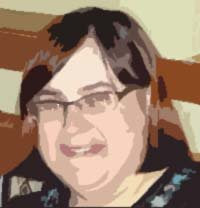Got to attend 3 sessions during Sunday’s Discovery Education Network (DEN) Day at Pennsylvania’s Educational Technology Expo and Conference (PETE&C).
My first session was called FIZZ (which I was given as my first choice because I presented a recess session... a preliminary unveiling of the PicturingAmericaMIAC Wiki that I, the other district librarians, and ELL teacher Kathy Wahl created to highlight the usage of the Picturing American Illustrations awarded to our district libraries through a grant from the American Library Association and the National Endowment For the Humanities. We paired each illustration with DEN Videos that can be used to give students more of a background of the events depicted in the illustrations).
I am not really sure why I chose to attend a session called FIZZ taught by a man named Lodge but my online friend and DEN Guru Stacey Kasse recommended the session and I was not disappointed.
Dr. Lodge McCammon is from the University of North Carolina’s Friday Institute. He shared ideas for using user-generated videos in the classroom (or in my case the library). He started by giving us a formative assessment modeling the use of a Google Form. The free resource is worth checking into for district use. The assessment checked our knowledge of math concepts such as area, surface, and volume.
The first idea he gave was to create an introduction video for the lesson, a teaching tool. He suggested going somewhere other than the classroom or library with a video camera to create a real-world use for the concept you are trying to teach. My idea that I took away would be to go to Lower Providence Library and show students that if they learn how to use the Arrowhead Library they can use the Dewey Decimal System in any library. Creating real-world context and interest is in line with library standards. The idea is to post the video online so students can always come back to it. This will help differentiate instruction as some students may need to watch the video over and over for repetition of the concept.
Next, we were given paper slides, a Flip Video Camera, and a script that went along with the paper slides. We were directed to work in pairs to create a video lesson. The theme of the day from Dr. Lodge, was that the end product did not have to be perfect because the focus is on the content. We only had 15 minutes to create the video in one take, no editing was allowed. This is a great project to use with younger students, I am going to try it with 3rd graders in the library as soon as we finish researching our topics. We never did get to see the results, hope Dr. Lodge puts them on his blog sometime soon.
Dr. Lodge is great at creating songs with lyrics that teach the lesson he is trying to convey. Please check out his blog post from the day’s work, and look for The Base-Morning White video, you will see how my group interpreted the song. Which taught a lesson. Dr. Lodge kept the song playing the entire time we were working in our groups. He also gave us a paper with the song lyrics. Looking at the lyrics while listening to the song gave a different dynamic to the lesson and may be the spark some students need to understand the concepts. I think I would like to see what happens if students are expected to come up with their own lyrics- they could even use their favorite songs, it worked for Weird Al Yankovick but in this case a lesson would be taught. I was thinking of having 4th or 5th grade students create a song about library skills and then use the video they create with 2nd and 3rd grade students. We could also post the video on the district website so students could go back and view it over and over, talk about reinforcing a lesson!
We were split into groups and were assigned a verse of the song. My Morning White group was assigned the Chorus. We had time to prepare our choreography for the chorus, using whatever props we had on hand which was not much. We practiced once as a whole group and then recorded the final product. The results are posted on Lodge’s blog: http://www.iamlodge.com/ryosin/?p=76.
At the end Lodge showed a summary video he created to reinforce the lesson. It seemed like a traditional lesson just video taped and posted online for students to view later. It is good reinforcement and students can watch the video over and over if they need the practice. The day ended with a summative assessment again using a Google Form. The results indicated that everyone in the room had learned quite a bit about math while working with the concepts through video production, not a traditional way to learn math concepts.



No comments:
Post a Comment